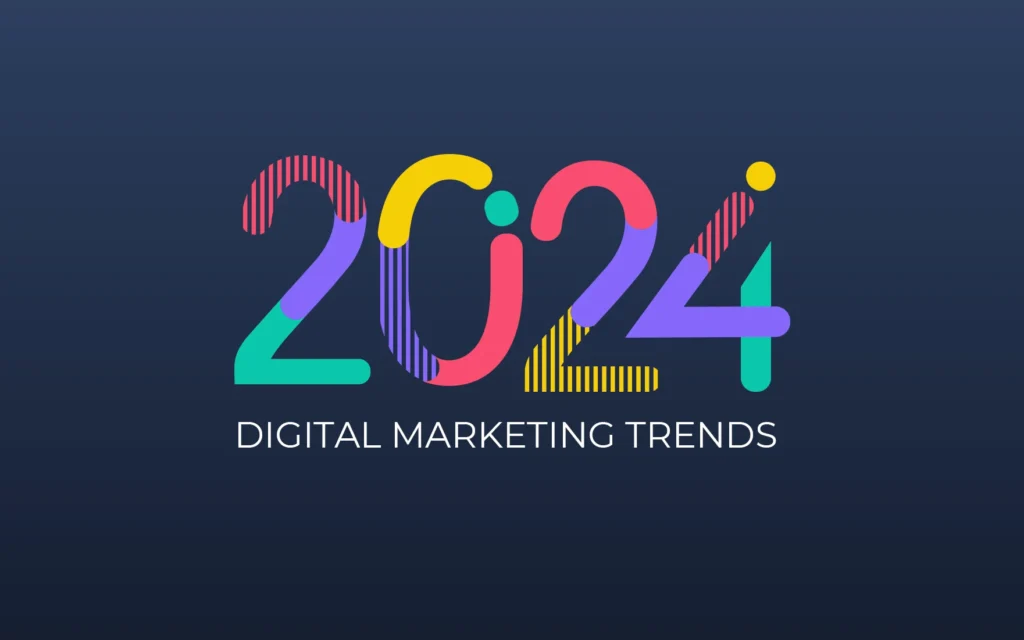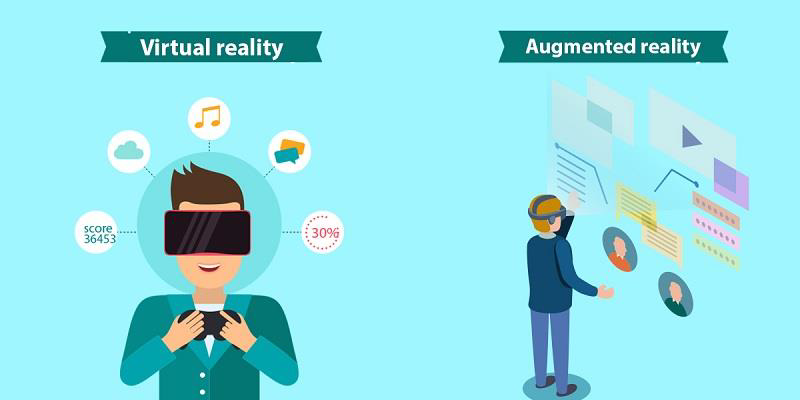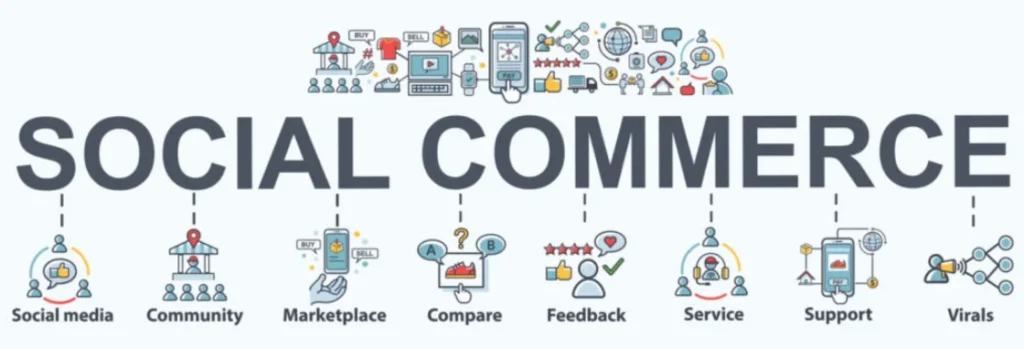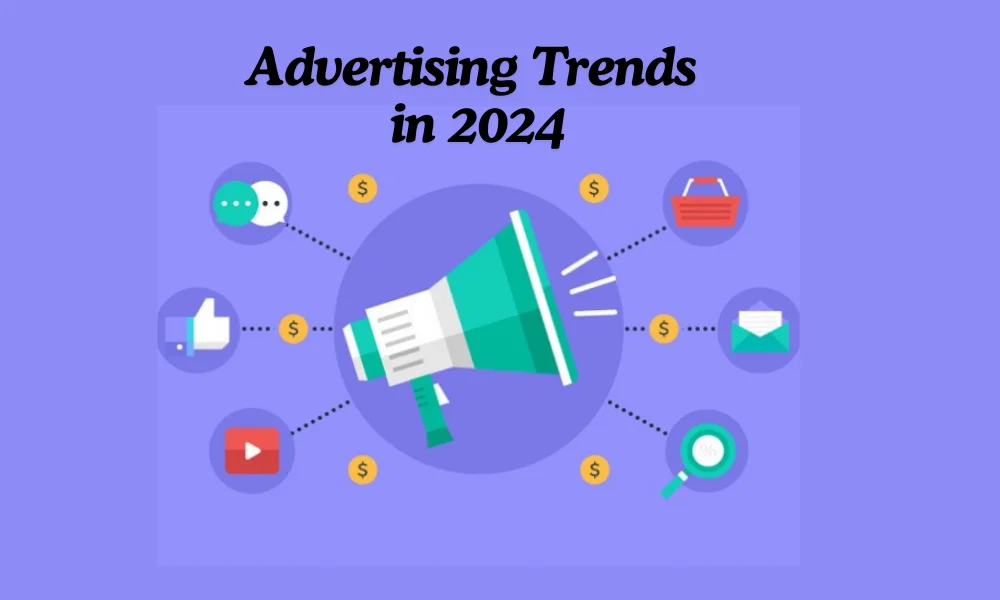Advertising trends in 2024
As technology continues to grow, advertising is undergoing rapid transformation. There was a time when marketing agencies relied on billboards and pamphlets to promote their products and services. As time evolved, the world shifted to online advertising, also known as digital marketing. In 2024, we are witnessing another wave of technological advancement with the launch of AI (Artificial Intelligence). Nowadays, marketing experts are responding to this change by incorporating AI into their strategies. This shift is defining the advertising trends in 2024, leading to innovative approaches and long-term success.

This article will explain everything you need to know about
Top Digital Advertising Trends in 2024
As spent is getting higher with every passing day, companies are reducing their budget and increasing the responsibilities of marketers. However, knowing about the latest advertising trends in 2024, you can accomplish more with your advertising strategy.

AI-Based Advertisement
Earlier, the companies overlooked Artificial intelligence considering it a program with no use. However, every sector is recognizing the importance of AI and advertising agencies are hiring AI professionals who can run ads using this technology.
Marketers spend almost 6-7 hours to improve their advertising process and fail to achieve desired results. However, using AI Helps them save time and bring positive outcomes, by recognizing the patterns of data quickly. As a result, their ad spent reduces and ROAS (return on ad spend) increases.
Voice Search and Smart Speakers
Voice search is becoming increasingly prevalent as more consumers use smart speakers and voice-activated devices. This shift presents new advertising opportunities. Brands need to optimize their content for voice search to ensure visibility. Additionally, advertising through smart speakers, such as Amazon Echo and Google Home, offers a direct and conversational way to reach consumers.

Sustainability and Ethical Advertising
Today’s consumers are more conscious of environmental and ethical issues. Brands that prioritize sustainability and ethical practices in their advertising are gaining favor. Transparent communication about eco-friendly initiatives and responsible business practices resonates with socially conscious consumers. Ethical advertising not only builds trust but also enhances brand reputation.
Augmented Reality (AR) and Virtual Reality (VR)
AR and VR are transforming the advertising landscape by creating interactive and immersive experiences. In 2024, more brands are incorporating AR and VR into their campaigns to engage consumers in innovative ways. From virtual try-ons to immersive brand experiences, AR and VR offer endless possibilities for creative advertising.

Data Privacy and Regulation
Data privacy continues to be a major concern for consumers and regulators alike. Stricter data privacy laws, such as the GDPR and CCPA, are impacting how advertisers collect and use data. Compliance with these regulations is crucial to avoid legal repercussions and maintain consumer trust. Brands must adopt transparent data practices and prioritize user consent.
Programmatic Advertising
Programmatic advertising has seen significant advancements, making ad buying more efficient and effective. Real-time bidding (RTB) allows advertisers to bid for ad impressions in real-time, ensuring optimal ad placements. Programmatic advertising streamlines the ad buying process, reduces costs, and improves targeting precision.
Social Commerce
The fusion of social media and e-commerce, known as social commerce, is reshaping the advertising landscape. Platforms like Instagram, Facebook, and TikTok are integrating shopping features, allowing users to purchase products directly from ads. This seamless integration of social interaction and shopping creates a convenient and engaging experience for consumers.

User-Generated Content (UGC)
User-generated content continues to be a powerful marketing tool. Brands are leveraging UGC to create authentic and relatable content that resonates with their audiences. Successful UGC campaigns, such as hashtag challenges and customer testimonials, foster community engagement and build brand loyalty.
| Point | Explanation |
| Authenticity and Trust | UGC is perceived as more genuine and trustworthy than branded content because it comes from real customers sharing their real experiences. |
| Cost-Effectiveness | Utilizing UGC reduces content creation costs as brands can leverage existing content created by their customers. |
| Enhanced Engagement | UGC campaigns, like hashtag challenges, encourage customers to interact with the brand and each other, fostering a sense of community. |
| Improved Reach and Visibility | When customers share UGC on their social media, it increases the brand’s reach and visibility through the customer’s network. |
| Boosted Conversion Rates | Testimonials and reviews from real users can influence potential customers’ purchase decisions, leading to higher conversion rates. |
Omnichannel Marketing
An omnichannel approach is essential for delivering a seamless customer journey. Consumers interact with brands across multiple touchpoints, and consistency is key. Effective omnichannel marketing ensures a cohesive brand experience, whether customers are shopping online, in-store, or through mobile apps. Integrating various channels and maintaining consistent messaging enhances customer satisfaction and loyalty.
Conclusion
The advertising landscape in 2024 is marked by rapid technological advancements and changing consumer behaviors. Staying ahead of advertising trends in 2024 is crucial for businesses looking to thrive in a competitive market. By embracing digital transformation, leveraging AI, prioritizing personalization, and adopting ethical practices, brands can create impactful and engaging ad campaigns. As we move forward, adapting to these trends will be essential for sustained success in the ever-evolving world of advertising.
Read more : Digital Marketing Case Studies
FAQs:
AI is revolutionizing advertising by automating and optimizing ad campaigns. It helps in recognizing data patterns, predicting consumer behavior, and personalizing advertisements, leading to increased ROAS (Return on Ad Spend).
Voice search and smart speakers offer new opportunities for brands to engage with consumers. By optimizing content for voice search, brands can improve visibility and reach more users.
Consumers today are more aware of environmental and ethical issues. Brands that prioritize sustainability and ethical practices resonate better with socially conscious consumers.
AR and VR are creating immersive and interactive advertising experiences. These technologies allow brands to engage consumers in novel ways, such as virtual try-ons or immersive brand experiences.

Alex Mitch
Welcome to my blog! With over 10 years in digital marketing , I’ve seen its incredible impact on smaller businesses. Join me as we explore how digital marketing can grow your audience and boost your business. Whether you’re an experienced entrepreneur or just starting out, you’ll find practical tips and insights to enhance your digital marketing strategies.





